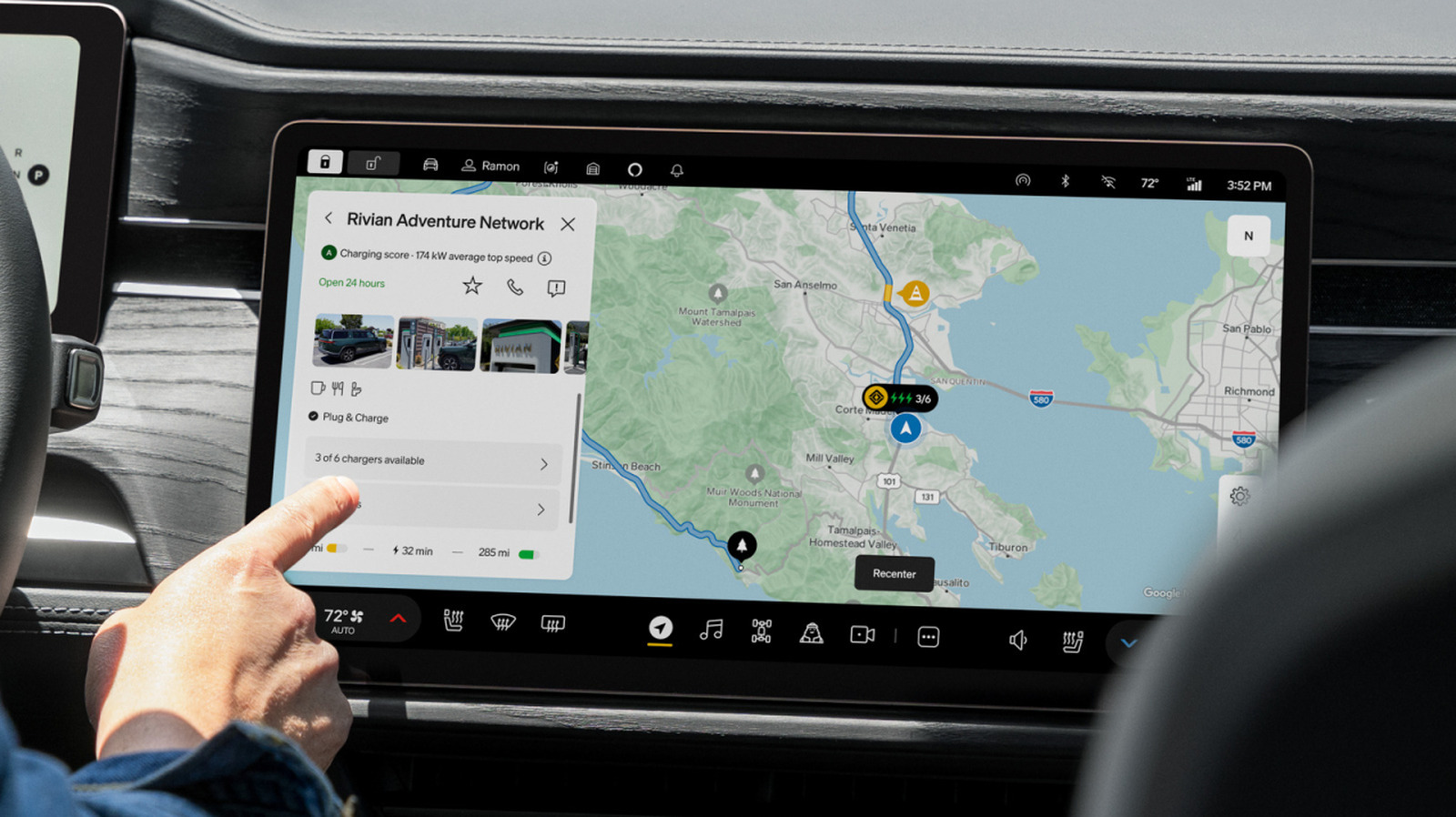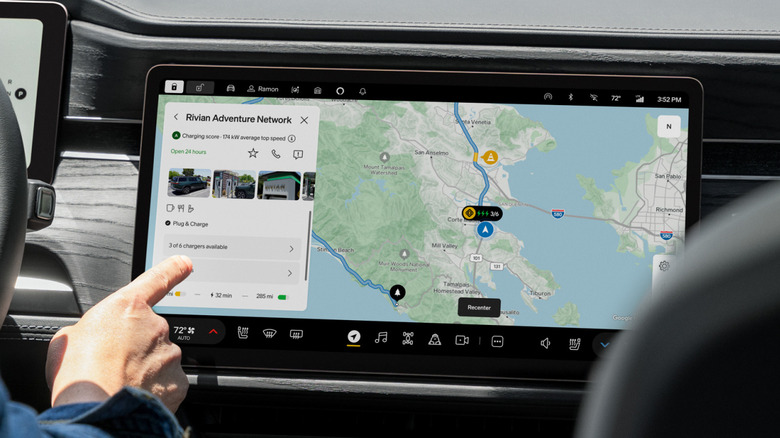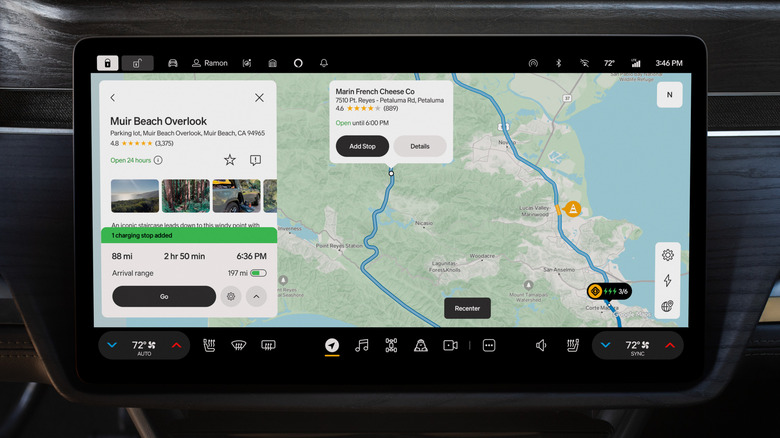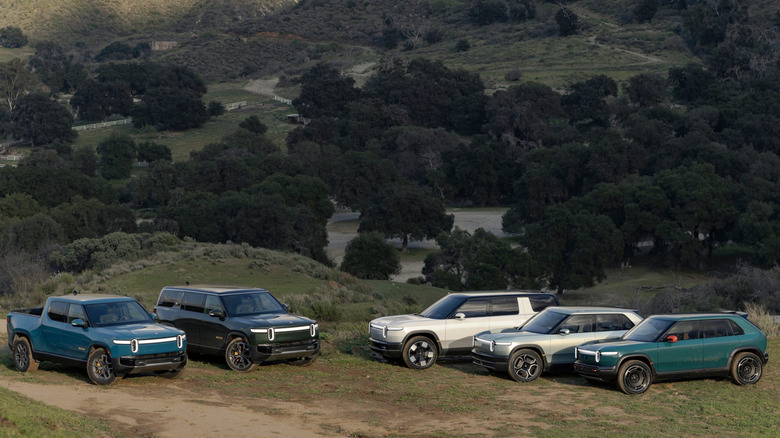Rivian builds brilliant electric trucks that offer almost everything the modern car buyer could want, but they still lack one feature that many people consider a dealbreaker: Rivian doesn’t offer Apple CarPlay or Android Auto. Unfortunately, that doesn’t change with the brand’s latest software update, but Rivian hopes integrating native Google Maps functionality will calm the cries for smartphone integration. The update does not bring the Google Maps that you have on your phone, though. It’s still Rivian’s native navigation system, just now using Google Maps data to improve things, including EV-specific features like range calculations, charging information, and charging preferences. While some automakers like Aston Martin are going all-in on CarPlay, Rivian is sticking to its guns and avoiding its integration, even with this new update. Will it be enough to win over the smartphone-addicted non-believers?
Apple CarPlay and Android Auto are annoyingly brilliant. They streamline the user interface between your phone, a device that you likely use for several hours each day, and your car. When people ask me for car buying advice, I ask them what features they want from a new car and most of the time their answer is “I don’t really care as long as it has Apple CarPlay,” so Rivian Navigation with Google Maps has a lot riding on its success. By the sound of it, it should at least be an improvement over the preexisting navigation system. It’s being rolled out via an over-the-air update to all R1T pickups and R1S SUVs starting today, both the pre-facelift and newer “Gen 2” models.
It’s a start
Rivian owners have complained on various forums about the map software for a long time now, and bringing Google Maps into the mix should address those complaints. It offers useful data including your range on arrival, charging stops and preferences, charging information, charging score, and Rivian Mobile App–based trip planning. Some of the app-based features do require a subscription to Rivian’s Connect+ program, which costs $15 a month or $150 a year.
The “range on arrival” feature uses data from the owner’s specific vehicle, driving style, and other preferences to offer the most accurate predictions of how much range will remain at the end of a trip. It also takes into account what accessories like trailers are in use. Owners can now choose whether they want to see their range displayed in percentage, distance, or both metrics. Charging stops and preferences are considered too, allowing owners to curate routes based on their own unique needs. This takes into consideration better chargers, special preferences to suit individual charging needs, and comfort levels with how much range remains upon arrival.
The new maps will consider real-time data for charging networks using plug-in data from other Rivians to determine how reliable a particular charging site is, and it ranks chargers along the route to provide the best chances at a smooth journey while minimizing charger-based hiccups. All of these new features are integrated into the maps with Rivian’s specific design language that includes topography and colors, and it allegedly improves “glanceability” and easier access to important information.
Google integration includes new convenience features
Other benefits of bringing Google into the mix include consistent connectivity to traffic data and tappable points of interest. When owners select their destination and begin their journey, the map will now continuously monitor traffic data in the background to ensure the driver remains on the quickest route. If, for example, an accident occurs on the selected route, the maps will now automatically reroute to avoid the traffic jam and keep the actual arrival time as close to the original estimate as possible. From lane closures to construction to accidents, your maps will keep things moving as efficiently as possible.
Prior to this update, Rivians already used Google Maps data for detailed information on points of interest, but now owners can tap points of interest on the map to learn more about hours, reviews, and contact information for about 250 million places around the world. This is enhanced with satellite imagery from Google Maps to help drivers easily orient themselves with the most up-to-date satellite imagery.
It’s an improvement, but it still falls behind some competitors
Rivian doubtlessly hopes these updates will quell the cries for smartphone integration and convince more buyers to choose Rivian, but as of now, Rivian Navigation with Google Maps still won’t include Google Built-In or voice assistant capabilities. Even other manufacturers that don’t offer smartphone integration offer Google Built-In, but Rivian’s Chief Software Officer Wassym Bensaid told The Drive, “We’re actively working on a holistic in-vehicle voice assistant that offers navigation support and much more.”
Other notable EV-makers like General Motors and Tesla also forego Apple CarPlay and Android Auto integrations, which is understandable to some extent. Smoothly integrating proprietary technology from Apple and Google into a car manufacturer’s product can be challenging, especially when that trademarked software has its own series of updates that can create new bugs. Beyond that, the modern version of a gold rush is taking place with user data, and carmakers want that data all to themselves. Carmakers want to know what features owners are using, but when owners are using Apple CarPlay or Android Auto, that user data goes elsewhere. In an interview with MotorTrend, Bensaid defended Rivian’s decision to avoid smartphone integration, saying,
“It’s been an intentional choice since day one to build all our own electronics in-house and then build the end-to-end software stack that powers these electronics. Software is at the center of the experience we provide to customers, and data is at the center of what enables software to run well. The fact that every single interaction in the vehicle is done through software, being able to collect that data allows us to continuously improve the performance.”






